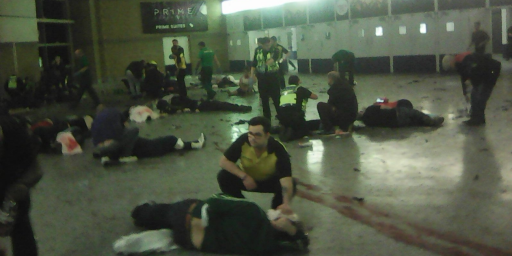Hate Speech Hierarchy
Malcolm Gladwell notes that there have been numerous celebrity “racism” incidents in the news lately, each of which have garnered different levels of public outrage. He concludes that there must be an informal “hierarchy to hate speech” which he attempts to formalize.
It’s an interesting discussion and I think he gets it right, both on the general criteria and his judgments on specific cases. His conclusion, likewise, is dead on:
I think [racism] is a profoundly serious problem in our society–much more profound than we generally acknowledge. But we debase that term when we apply it to comments or actions indiscriminately. There is a distinction between being a racist and simply saying something dumb.
Most people instinctively understand that, I think, but it doesn’t seem to stop the charge from being bandied about recklessly.






I think there is one other slant to “hate speech” that I have not seen commented on. I like to call it the ‘nuclear option’. That is, when the intent is to cause the most harm to someone without actual violence. When exercising this option one uses what they perceive to be the word/phrase that will cause their opponent the most ‘pain’. If two people of different ethnicity were having a heated exchange, one may use a racial slur to wound the other. The intent was to hurt the others feelings deeply. It doesn’t (necessarily) mean that he believes the others race to be inferior, etc. He simply believed that by using the word/phrase (going ‘nuclear’), he would cause the most damage. I think this is most prevalent between strangers, as all they have to work with is their opponent’s appearance. Or maybe I’m just a dumb, cracker, mick…